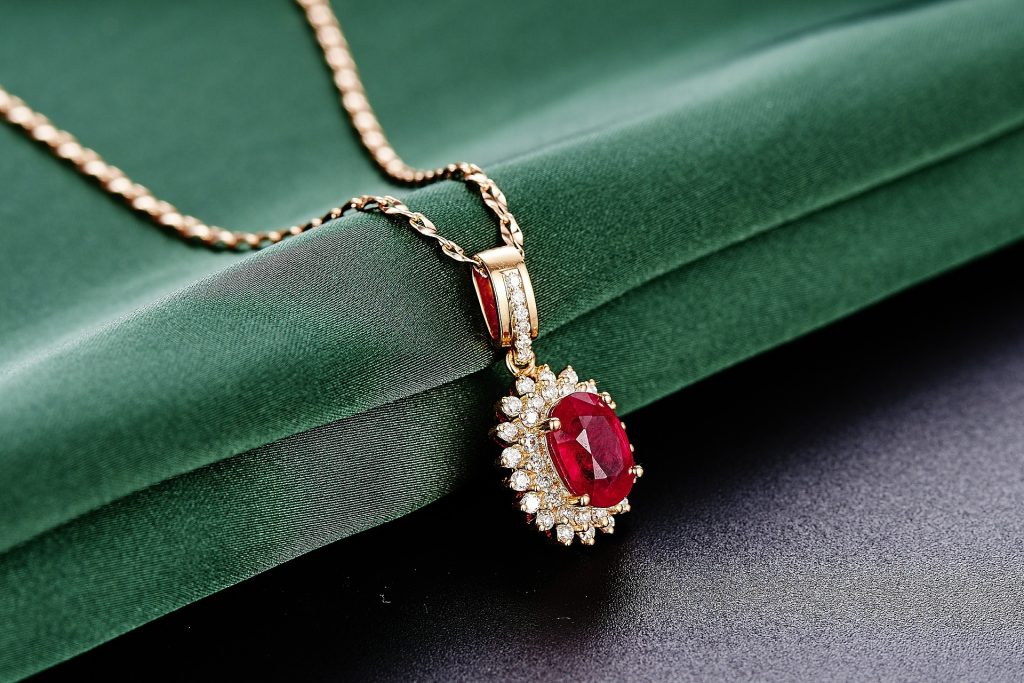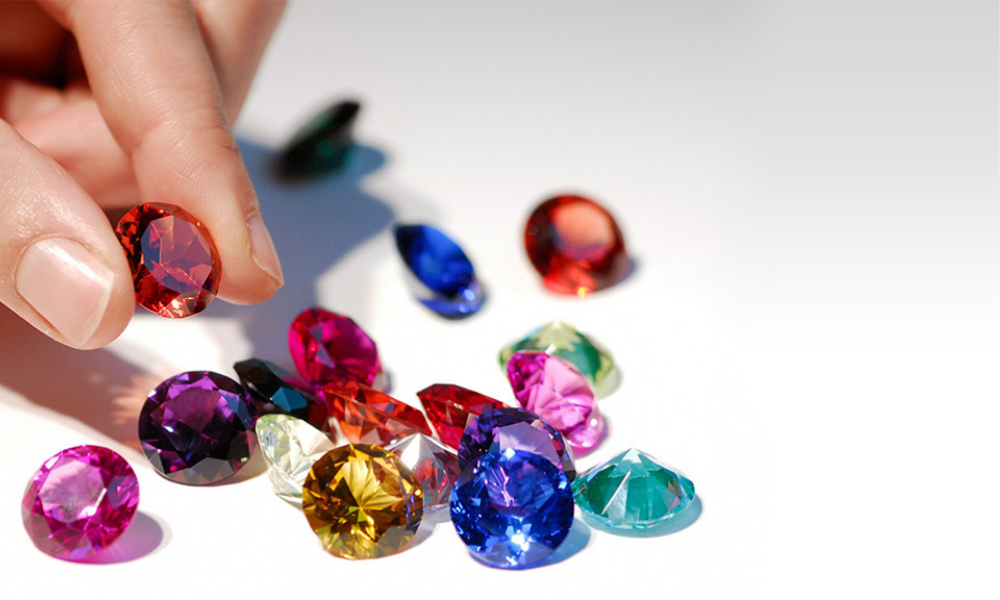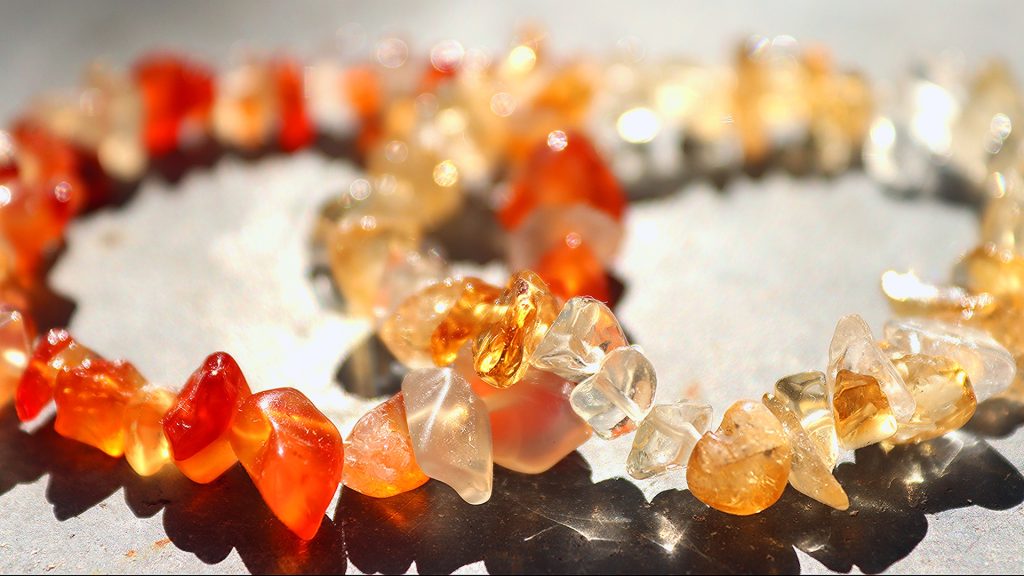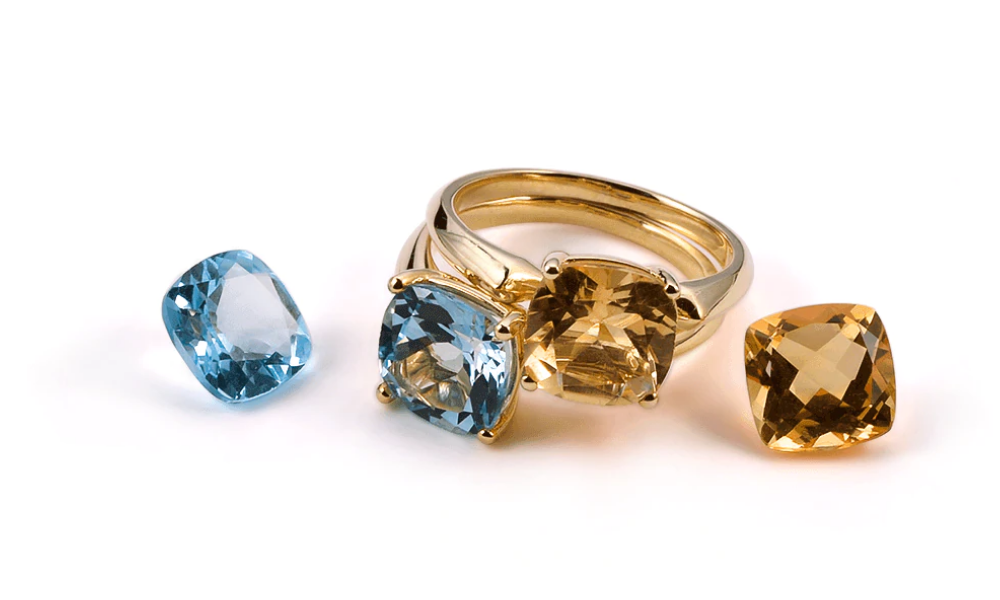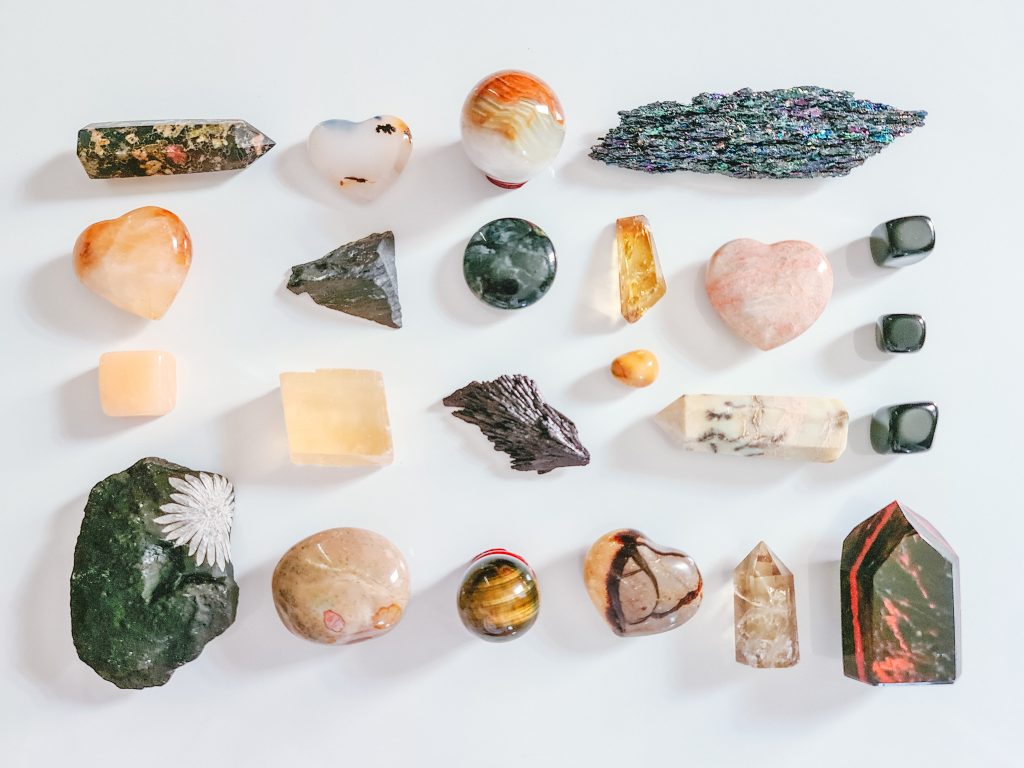Green is one of the most popular gemstone colors, and it has long played a significant role in the industry. It’s a refined shade that adds a touch of class to any ensemble. Green represents freshness, nature, and energy, as well as life and renewal. We are naturally drawn to it since it is the most relaxing color on the rainbow.
Although emeralds are the most well-known green gemstone, there are over a hundred different varieties of green gemstones available for jewelry. These come in a variety of hues, pricing, and features, making it tough to pick the best one for your needs.

What Gemstone Is Light Green?
There are several choices when it comes to what gemstone is light green. The most popular one is peridot. It is a type of olivine and is usually an olive green color. Sometimes it is found as a meteorite, and it is the birthstone for August. It’s also a beautiful choice for engagement rings, as it is also a traditional birthstone. The following is a list of other stones that are light green.
Other examples of green gemstones are prasiolite, chrysoprase, and serpentine. Amethyst is the most common green gemstone and is the most expensive. The name prasiolite means ‘light’ in Latin. Amethyst, which is a purple variety, is also light green. This type of stone is usually inexpensive and is not a valuable stone, but it can be a great jewelry piece for a modest price.
Apatite is another light green stone. It is used in making fertilizer, but it can be used as a gemstone. During meteorite impacts, it liquefies rock nearby, shooting it up into the atmosphere. Once it hits the ground, the liquid rock cools down and falls to earth. Because it’s so soft, moldavite is not suitable for jewelry. It can scratch easily and can be easily broken.
Green gemstones are popular in jewelry because they’re very rare. Amethyst, for example, is a purple variety of quartz. It is also available as light green quartz. The most common green gemstone is Jade, which is a beautiful variety of apatite. The rarest of all green stones is the Peridot. The peridot, which is the most common green crystal, is the most precious of the three.
Green Diamonds
Features:
- A rare and valuable gem
- Extremely uncommon
- Extremely costly
- Synthetic options are available.
Green diamonds are incredibly difficult to come by. Green diamonds are quite distinctive in this regard, as most colored diamonds receive their color from the presence of trace elements. Natural irradiation, which occurs over thousands of years, gives them their color. Although radiation is dangerous, green diamonds are not radioactive and are therefore safe to wear.
Green diamonds are more expensive than red or pink diamonds, but not nearly as much as red or pink diamonds. They come in a variety of hues ranging from pale to dark green, with secondary tones of yellow, brown, and blue. Because natural green diamonds are so pricey, synthetic (man-made) green diamonds are a more cost-effective alternative.
Green Sapphire
Features:
- Rare
- Extremely long-lasting
- Heat treatment is a common practice.
- Synthetic options are available.
Green sapphires were not previously thought to be particularly desirable, but their popularity is gradually growing. Green sapphires are extremely rare, and their color comes from iron. Green sapphire jewelry can be tough to come by because blue is the most popular sapphire color.
The colors of green in these jewels range from light to dark, with secondary accents of blue or yellow. Green sapphires are a good choice for all sorts of rings because of their exceptional gemstone properties, such as high durability (Mohs 9), brilliance, and beauty. The majority of green sapphires are heat-treated, which is a popular practice in the industry.
Emerald
Features:
- Probably the most well-known green stone.
- Frequently heavily incorporated
- Frequently treated
- Not very long-lasting
- A variety of beryl
Emeralds, the most common green gemstone, have been used since antiquity. Cleopatra, the famed Egyptian queen, was known for wearing emeralds. Mummies have been discovered buried with emeralds, indicating that they were employed in burial ceremonies.
Emeralds are part of the prestigious beryl gemstone family. Colour is the most significant consideration when buying an emerald. After all, an emerald isn’t an emerald unless it’s green. The stone is more precious if the hue is more bright and more vibrant. Most emeralds have inclusions, which are usually moss-like threads called ‘Jardin’ from the French word for garden. Eye-clean emeralds are quite rare, and these are relatively frequent. Emeralds are fairly hard stones (7.5 to 8 Mohs), however, when exposed to rigorous wear, the inclusions can cause the stone to weaken and chip. To improve color and stability, they are frequently treated and fracture-filled. Emeralds are suitable for many forms of jewelry, but special caution should be exercised while selecting an engagement ring.
Jade
Features:
- Durable and compact
- Hardness: medium
- Faceted seldom
- In Asian countries, it is highly regarded.
- Luster ranges from waxy to vitreous.
Green and jade are practically synonymous. Since ancient times, jade has been cherished and used, particularly in China, where it can be dated back over 7000 years! There are two types of jade: jadeite and nephrite. While jadeite is more valuable and of higher grade, nephrite is more plentiful and less expensive. Due to its compact nature, jade is somewhat soft (6 Mohs) but extremely durable. Most jade is carved or cut into cabochons or other particularly clean cuts. Faceting jade is less common, yet it can add sparkle to the stone. Jade has a lovely waxy luster that draws you in.
Green Agate
Features:
- Frequently included
- lustrous vitreous
- Frequently improved
- Hardness: medium
Agate comes in a wide range of colors, with green being one of the more uncommon. It’s usually banded or has dendritic inclusions in it. Green gemstones that are unicolor are virtually always dyed to produce the desired color. Agate is smooth with a vitreous luster and is generally translucent to opaque. They’re usually cut into cabochons, but they can also be faceted to add depth and light reflection. Agates are extremely durable (7 Mohs) and can be used in any style of jewelry. Although green agate is a relatively inexpensive gemstone, the quality of the setting and workmanship required can raise the entire price of the piece.
Tsavorite Garnet
Features
- Gemstone is still quite fresh.
- Extremely uncommon
- Popular and in high demand
- Expensive in comparison
- Good long-term durability
- A good emerald substitute
Tsavorite (a.k.a. tsavolite) is a new gemstone on the jewelry market. It’s a green grossular garnet type that obtains its vibrant green hue from trace levels of vanadium or chromium present during creation. Tsavorite is one of the most popular garnet kinds, and it is highly valuable due to its scarcity. Tsavorite is an excellent emerald alternative because it is more durable (7 to 7.5 Mohs), less expensive, and just as beautiful and bright. Tsavorites, unlike emeralds, are rarely (if ever) treated and are considered a natural gem. They haven’t been synthesized either.
Demantoid Garnet
Features:
- The most valuable garnet variety
- Found in small sizes
- Inclusions that stand out
- Excellent brightness
Demantoids are a type of garnet that belongs to the andradite family. The most precious garnets are demantoids, which are also extremely rare. Finding a large demantoid stone is difficult because most demantoid gemstones are under 2 carats in size.
Demantoids range in hue from pale emerald green to vibrant emerald green. Some feature unappealing secondary colors such as yellow or brown. The most valuable demantoids are vivid green demantoids, which are mostly found in Russia. Horsetail-shaped inclusions are present in some demantoids that aren’t found in other jewels. Demantoids are one of the few gemstones whose imperfections enhance value to the stone, making them one of the rare gems that do. Demantoids are exceptionally bright gemstones that can be used on a regular basis.
Peridots
Features:
- Idiochromatic
- Good long-term durability
- Priced reasonably
- The volcanic gemstone is also known as Peridot
Peridot is an idiochromatic stone, which means it comes in only one colour. It appears in many colours of green, with yellowish undertones. Peridot is one of only two stones (the other being diamonds) created deep inside the earth’s mantle and brought to the surface by severe geological activity. It is also known as the volcanic gemstone because of this. Peridot is robust enough for everyday usage (6.5 to 7 Mohs), but when used in rings, it should be placed in a protective setting, such as a bezel. Peridot comes in a variety of shapes, including ovals, marquises, rounds, squares, and trilliants. The brightness of the diamond is highlighted by these forms.
Green Topaz
Features:
Exceptionally bright
High-quality durability
Frequently transparent
It’s a unique color.
Topaz is colorless by nature, but the inclusion of trace components like chromium gives it color. Green topaz has a vitreous sheen and is usually fairly pale in hue. It is, however, a less popular topaz color.
Other Popular Light Green Gemstones Are:
- Green Labradorite
- Green Tourmaline – a.k.a. Verdalite
- Amazonite
- Aventurine
- Malachite
- Prasiolite
- Green Zircon
- Green Fluorite
- Green Apatite
Metals & Gemstones In Green
Green gemstones go nicely with any metal colour, although the style of the jewellery can be affected by the metal colour. White metals, such as platinum, silver, or white gold, for example, give green gemstones a contemporary aspect, whilst rose gold gives them a unique, vintage appeal. The appearance of green gemstones set in yellow gold is highly appealing. Green and yellow, according to colour theory, make an analogous colour combination. This creates a soothing and approachable atmosphere.
Conclusion
Green has always been an important colour in the world of gemstones, and it is still one of the most popular. It’s a refined colour that gives a touch of class to anything expensive or understated. Green represents freshness, nature, and positive energy, as well as life and renewal. Green is the most relaxing colour on the spectrum, which is why we love it so much in clothing and accessories.
Green diamonds represent the attributes of richness, prosperity, and success that are linked with the colour green. Relaxation, tranquillity, and expansion are some of its restorative effects. They are seen as a symbol of new beginnings and are an excellent choice for individuals seeking a costly gemstone with a natural connection. Diamonds were thought to be tears of the Gods or splinters from falling stars by the ancient Greeks and Romans.


